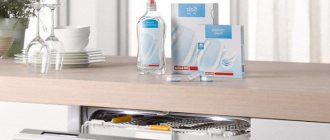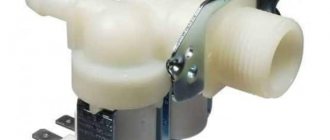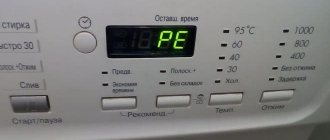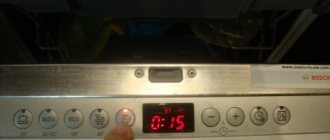Often, when reading the technical documentation for a dishwasher, buyers are faced with a mysterious capacity parameter, which is measured in sets of dishes. The label clearly states how many sets the appliance accepts, and not all manufacturers and sales consultants explain what a “dish set” means for a dishwasher. We will tell you how many items are included in the set, what kind of cookware it is and how this relates to the volume of PMM.
Our ideological inspirers - readers of articles and instructions - asked a lot of questions about this, so it’s worth understanding in detail what a kit is in the understanding of manufacturers.
Set - how much is it?
Manufacturers of washing equipment have the concept of a set (set) of dishes for PMM. The number of devices included in it is not always strictly regulated, and different interpretations indicate a different number of items. A general outline can be drawn by determining that the set of dishes includes utensils that one person needs for one full meal. Usually these are the following items:
- Soup (deep) plate;
- Flat plate for serving the second course;
- Salad bowl;
- Cup and saucer (tea or coffee);
- Cutlery: spoon and fork.
In the list you will find 6 items. According to European standards, there is much more tableware in the set - these can be additional accessories, stand plates, glasses, dessert plates, a knife, a teaspoon, etc. We limited ourselves to the average standard list of devices that are usually used in the CIS countries.
On a note! Pots, pans, baking sheets are not included in the set.
The websites of dishwasher manufacturers have useful materials and articles that explain what is included in the dishwasher set. After analyzing several sites, we can conclude that PMM manufacturers have significant differences in the meaning of the concept “kit”. The reason for this is the diameter of the plates. In European countries, wide and flat dishes are used, while in Russia they have not yet moved away from bowls - deep plates of small diameter. 6 European plates will take up less space than 6 domestic ones. Flat dishes can be placed on edge and thereby save a lot of space, but deep dishes need to be turned upside down to be washed - just a few plates will take up the entire basket. Glasses, glasses, cups, deep salad bowls - all this is laid out in the same way.
Therefore, if you want the capacity of the machine to be realistic, switch to standardized dishes, otherwise the 10, 12 or 14 promised sets will not fit into the hopper.
The best material for everyday life and holidays
When choosing a dinner set, it is important to pay attention not only to the equipment, but also to the material of manufacture. The beauty and practicality of the dishes depends on the material, for example, the ability to be used in a microwave oven and washed in a dishwasher.
Earthenware for everyday use
Earthenware tableware is leading the market. The line includes cheap sets of tableware and higher-end services with perforation, painting and stucco. Price and quality depend on the type of earthenware used and the complexity of the decor.
The most expensive and durable solid earthenware , fired at high temperatures. Cheap, but less durable, is limestone faience. It is fired at lower temperatures and not for as long. Between these types there are two more - soft and feldspathic.
Glaze is used to neutralize the porous surface. A protective glaze is applied to the product and then baked. If a drawing is planned, it is applied under the glaze, so the picture is not erased under the influence of detergents. Earthenware with famous types of painting, for example, Gzhel, is especially valued.
The disadvantages of earthenware tableware include fragility, vulnerability to temperature changes, and food cooling quickly, despite the thick walls.
Porcelain for family dinners and guests
Porcelain products are thinner, but much stronger and more durable. This is due to the composition of the material and repeated baking at high temperatures. Connoisseurs can easily distinguish porcelain from earthenware by their transparency and the special sound heard when tapped.
Even sets of white tableware without any decoration look beautiful, but porcelain products are often decorated with gilding, multi-colored painting, openwork perforation, reliefs and three-dimensional elements.
Porcelain sets can last for decades if you do not wash them with aggressive detergents, do not put them in the microwave, do not put them in the dishwasher, and store them carefully, transferring items with napkins.
Among the well-known manufacturers producing high-quality porcelain dishes are the Dobrush Porcelain Factory Beaumond, Bernadotte (Czech Republic), Cattin Porcellane (Italy), Colombo (China).
Ceramics for special applications
Ceramic tableware is thick-walled and even a little rough, which makes it ideal for decorating dining rooms in country and retro styles, as well as for table setting in some national styles. For example, brown ceramics are popular in Ukrainian and Japanese cuisines.
Ceramics for dinner and tea sets are always glazed, as this material is very porous. Pores tend to absorb liquids, which is not suitable for serving and makes care difficult.
Sets of ceramic tableware often include broth bowls and soup bowls instead of soup plates. The first dishes in ceramic tureens look like they are in pots, which is associated with cooking in an oven and increases appetite.
Glass for every day
A modern set of glass tableware is easy to use. Glass plates can be safely put in the microwave and washed in the dishwasher without fear that they will lose their attractiveness or damage the equipment. Heat-resistant glass is used for production, so the products can withstand temperature changes.
Among glass dining and combined sets there are several lines :
- Clear glassware is ideal for those who value minimalism. Glass plates look good even on a small table, without visually cluttering it due to their transparency.
- Sets made of smoky translucent glass. Inexpensive and practical dinnerware that is easy to care for. Smears and dried drops of water are not visible on smoky glass.
- Colored glass with or without patterns is a very beautiful glassware, suitable for everyday use and for holiday serving.
The range of glass sets is the widest, since this universal material can be used to make tableware, tea cups, glasses, and jugs. The famous French manufacturer Luminarc has similar sets.
Glass ceramics – impact-resistant glass
This practical white glass ceramic dinnerware set is ideal for everyday use. Glass ceramics have properties identical to glass, but are stronger and more durable. If you don’t like the white classics, look for colored or black glass ceramic dishes in stores.
Glass-ceramic sets are resistant to scratches and chips, are not afraid of high temperatures, and are suitable for microwaves and dishwashers. Shockproof plates can remain unharmed even if dropped.
Glossy shine looks very stylish. Impact-resistant glass, as a rule, is not decorated with gilding and voluminous decoration, but even without decoration it is beautiful and self-sufficient. There are rulers with a pattern applied under the glaze; this decor is very durable and does not complicate operation.
What options for PMM capacity are there?
All dishwashers, in terms of the capacity of the washing tank, are divided into three categories:
- Compact and miniature devices. They will fit from 4 to 8 sets, but most often it is 5-6 sets. Small pans and pots can be placed at the expense of multiple sets. Almost any oven trays do not fit into such a hopper, but if you wash them separately from everything else, you can try to fit them.
- Narrow models . Typically the width of these structures is about 45 cm (can be 44 or 44.8 cm). It includes from 9 to 12 sets, but the designers managed to create small machines designed for 13 and even 14 sets - this is Premium class equipment. The average narrow PMM will accommodate 10 sets of dishes.
- Full-size models. These are spacious designs designed for 12-17 sets. On the Russian market, most often there are full-size machines with a hopper for 15-16 sets.
How to choose a suitable PMM?
When selecting a model, determine without reference to the passport data what the actual capacity of the bunker is. First, inspect the tank and figure out how much and what kind of dishes you can load into it. For a small family of 2 people, a small machine with a hopper for 6 sets is enough. The following models are suitable:
- Candy CDCP 6/E is a small PMM with a water consumption of 7 liters per washing cycle. Noise 51 dB, there are 6 programs and condensation drying. There is a delayed start function for up to 8 hours. Full protection against leakage, weight 22.5 kg. Price from 11,480 rubles.
Economical
Almost all modern machines consume no more than 2,500 watts of electricity and an order of magnitude less water than you use when washing dishes by hand. However, before purchasing, it is still worth clarifying these characteristics.
Some premium models have programs that automatically optimize resource costs. Whirlpool models have technology that, using built-in sensors, recognizes the degree of load of the appliance and the soiling of the dishes, and then selects the most suitable washing cycle, which minimizes water and energy costs.
What is one set for dishwasher
Often, when reading the documentation that accompanies a dishwasher, the consumer encounters a mysterious parameter called capacity, which is measured in sets of dishes. The labels clearly state how many sets the equipment can accept, but not every manufacturer or sales consultant will explain exactly what and in what quantities is included in the set. You should familiarize yourself with how many items the set is made up of, what kind of utensils it is made of, and how this relates to the volume of PMM.
What is included in the dishwasher set?
In accordance with the rules of etiquette and table setting standards, a set of dishes for one person should be composed of:
- One deep plate - for a liquid first course;
- Three flat plates - for a side dish, appetizer or salad and dessert;
- Cups for drinks (tea, coffee, compote);
- Glasses for alcoholic drinks and/or glasses for juice or water;
- Three spoons - tablespoon, tea and dessert.
Based on the above data, we conclude that the dishwasher set is made up of 11 items of different shapes and sizes.
Choosing a dishwasher by capacity
When choosing such equipment, be sure to take a closer look at the real indicators. You should not rely solely on the information from the technical data sheet. Consider how many dishes you use at one time and how many items you can load into the machine. As a rule, families of two people choose compact devices, the capacity of which in rare cases exceeds 6 sets. Pay attention to the products of Candy (free-standing), Siemens (partially built-in), Bosch (partially built-in).
For an average family of four, the capacity should be at least 8 sets. You should take a closer look at fully built-in models from Bosch, Hansa, AEG. Larger families should look for full-size units that can handle at least 12 place settings per wash cycle. But as domestic realities show, capacity is not always the decisive criterion. Much more depends on the overall dimensions, because there is simply nowhere to fit a full-sized unit in a small kitchen. In this case, choose from narrow models.
Source
Noise level
This parameter is very important if you are planning to purchase a car for a studio in which the kitchen is combined with a living area. A noisy unit can make it difficult to sleep and talk on the phone. The quietest cars are 43–45 dB. When choosing, it is worth keeping in mind that, for example, most modern refrigerators hum at a level of 45–50 dB.
Machines with an inverter engine are considered quieter (and at the same time as durable and economical as possible). But almost silent operation also has a downside: sometimes it is impossible to understand whether the washing is finished. In this case, a light indication on the display comes in handy, and some machines project the light or the remaining process time directly onto the floor. However, in recent years, models with a glass door, like a microwave or oven, have appeared (in particular, these are produced by manufacturers Midea, Haier). The fact that they have finished working can be determined visually.
Why are dishwashers measured in "dish sets"?
A dishwasher saves water, energy and household chemicals, and with them it also makes life much easier for every housewife. Now you don’t need to wash mountains of plates, cups and glasses left after every family meal - the automatic washing machine will handle the dirty work on its own!
Loading the machine is considered sets - as a rule, from 4 for tabletop mini dishwashers to 14 for full-size floor-standing dishwashers. Why? It’s simple: this is the only way the owner of a dishwasher can determine how many people the device is intended for. One set of dishes is allocated per guest at the table, designed to serve the first course, second course, dessert and drinks.
The dishes are not heavy and do not require special care
Food does not burn to the surface, which allows you to fry meat directly in the pan. The pan handles do not get hot during cooking. This was achieved by inserting a silicone gasket between the body and the base.
The pan has a built-in steam control mechanism. At the same time, liquid can be drained through the lid. The company offers models that are suitable for beginners as well as professional chefs.
What is included
According to international standards, one set of dishes includes:
- deep soup plate;
- a large flat plate for main courses;
- dessert plate;
- cup and saucer;
- wineglass;
- knife;
- fork;
- tablespoon;
- teaspoon;
- dessert spoon.
For these items, the baskets have special compartments, holders or folding latches that securely hold them in place, protecting not only the dishes themselves, but also the internal mechanisms of the dishwasher from damage.
Possibility of working without running water
In the vast majority of cases, of course, buyers are looking for machines for kitchens where there are no problems with water supply. But if you have a specific situation (for example, you are choosing a dishwasher for your cottage), it is quite possible to find a device that works without being connected to a water supply.
Firstly, there are several compact dishwashers that operate not only without running water, but also without electricity. They are based on simple mechanical force: you turn the handle, and the system distills water and detergent inside the container. These include Circo Independent, Wash N Bright and NoStrom EcoWash. There is also a super compact Tetra Heatworks device. True, these models are more of a design concept than a marketable product, and it is difficult to find them on sale.
A more realistic option is a free-standing machine, which provides for manually pouring water into the reservoir. The most common models sold on the Russian market are produced by Midea.
Features of washing large-sized dishes
Having carefully read the list, you will be surprised to find that there are no large utensils in it: pots, saucepans, frying pans, salad bowls, lids, cutting boards... How is it that they really can’t be washed in the dishwasher? You can - of course, if the cookware manufacturer kindly mentioned it. There is a lower basket with folding stands for it. However, if you need to load a frying pan or pot, you should remember that fewer “sets” will fit in such a dishwasher, because cooking utensils have a large volume and, accordingly, “eat up” precious space.
Miele dishwashers
The German company Miele is one of the leaders in the production of reliable premium dishwashers. In the catalog of our online store you will find narrow 45-centimeter and standard 60-centimeter models, designed for simultaneous loading of 9 to 14 sets of dishes. The menu provides from 5 to 13 automatic programs that adjust the washing cycle based on the parameters of time, soiling or fragility of the dishes:
- ECO (50 degrees) – economical long-term washing mode;
- automatic (45-65 degrees) – temperature and cycle duration are adjusted automatically depending on the degree of soiling of the dishes;
- delicate (45 degrees) - the best choice for fragile porcelain and glassware;
- extra quiet (55 degrees) – night mode;
- QuickPowerWash (65 degrees) – highly effective washing for heavily soiled dishes;
- hygiene (70 degrees) – a program for sterilizing cutting boards and children’s dishes;
- intensive (75 degrees) – intended for dirty dishes with dried or burnt food particles;
- normal (60 degrees) – designed for daily washing of dishes with average soiling;
- without heating - wash in cold water;
- without upper basket (65 degrees) – washing only in the lower basket in order to save energy and water;
- pasta/paella (75 degrees) – used to remove dried or burnt sauces and pasta;
- beer glasses (45 degrees) – delicate glass washing;
- machine cleaning (75 degrees) – a hygienic program without loading dishes to clean the nozzles and remove limescale deposits.
Ease of use of the dishwasher is provided by the Knock2open handleless opening functions, AutoClose, BrilliantLight, delayed start and PowerDisk automatic dispenser.
All models that you can purchase in our store are divided into two categories: free-standing and built-in. We will tell you more about the features of each of them below.
Freestanding
As the name of the group suggests, such dishwashers are designed for separate installation anywhere in the kitchen, where convenient access can be provided for supplying water and draining waste liquid. They are delivered in a fully assembled, laconic case, are cheaper than built-in ones and do not require professional installation - you can connect the unit to communications yourself. Their most important advantage is mobility: if necessary, such a device can be easily disconnected and transported to another location. There is only one drawback - they take up additional space in the kitchen, and therefore are not always suitable for compact spaces.
Built-in
Built-in dishwashers are designed for installation in a furniture set - a special cabinet made in accordance with the external dimensions of the case. This category is divided into two subtypes:
- partially built-in – the dishwasher door remains visible;
- fully built-in - a decorative facade made by a kitchen furniture manufacturer is hung on the door.
Built-in models easily adapt to the height of the worktop and fit well into any interior, making them the choice of those looking for a solution for a modern, compact and highly efficient kitchen.
Source
Drying method
The advantage of a dishwasher is that you don’t have to dry the dishes after using it. However, drying also has its own nuances. Modern models use several technologies. The simplest drying method is condensation. At the last stage of washing, all the dishes are doused with hot water, then they cool down, the drops drain and dry, and the excess water is pumped out. This machine is quieter and more energy efficient than devices with other technologies, but drying can take a very long time. In this category, you can consider the Electrolux ESL 94200 LO, Candy CDP 2L952 W‑07, Hansa ZWM 416 WH models. You can buy such a unit at a price of around 15 thousand rubles.
Turbo drying occurs a little faster when the dishes are additionally blown with air using a built-in fan and heating element (models Midea MID45S700, Haier DW2‑STFWWRU, Beko DIN48430). Its variety is intensive drying with a heat exchanger (recondensation). Such options are more expensive (from 25 thousand rubles), but after a short time you will be removing dry dishes from them.
There is also the so-called zeolite drying: a container with the mineral zeolite is installed in the machine, which absorbs moisture and generates heat. This technology saves energy because it does not require additional ventilation and heating elements. However, this advantage is somewhat overshadowed by the fact that zeolite drying is available exclusively in premium models (from 60–70 thousand rubles). Almost all of them on the Russian market are manufactured by Bosch (for example, Bosch SPV66TD10R) and Siemens (for example, Siemens SR 656X01 TE).
It is also useful to know that machines may have a drying and washing class indicated. Class A means that your dishes will always be perfectly dry and clean. Wash and dry class B means that small droplets of water will remain on the dishes after the cycle is completed. Most cars are now category A. The same goes for energy consumption. In general, manufacturers try to make all models as economical as possible and provide high quality washing. So, if you are not buying a 15-year-old used unit or an industrial machine for a restaurant, you don’t have to worry too much about this issue.











